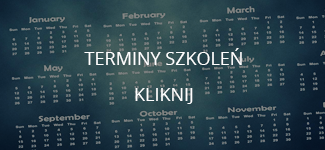Aligner Training Centre – training for doctors
The main assumption and purpose behind the creation of the Clear Aligner Centre was and is to promote the use of the Clear Aligner method throughout the country. For years, we trained doctors – both those who are interested in implementing this method in their practices, and those who already apply the method, but wish to perfect it to achieve better results and cure more and more complicated cases.
Non-surgical Jaw Expansion with the use of MSE Jaw Bone Expander
Non-surgical Jaw Expansion with the use of MSE Jaw Bone Expander
Warsaw 26 October, 2019 r.
Hotel Marriott, KOMETA room
Consecutive interpreting: Dr. Rafał Rogowski
Speaker:
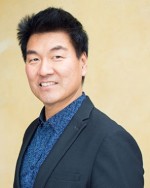
Prof. Won Moon, appointed by Thomas R. Bales to the Chair of Orthodontics, is the program director of the UCLA School of Dentistry orthodontic residency program. Since 2002, he holds the American Board of Orthodontics diploma. He graduated from Harvard dentistry, and orthodontic education at UCLA. He studied mathematics before dentistry, and his research interests include 3D image analysis using surface mapping functions and elliptical Fourier descriptors, craniofacial phenotype research in the Genomewide Association, elaboration and simulation of the finite element model, 3D orthodontic printing, orthopaedic correction, respiratory system pathway corrections as part of orthopaedic corrections, accelerated tooth dislocation and micro-implant (MI) design. His works were published in various journals, and due to his unrestricted interests in the field of orthodontics, he is also a co-author of two textbooks. He presented the results of his research in 15 countries, during over 150 presentations. Currently, he focuses on creating orthopaedic correction protocols with MI, correcting the airways in patients with nasal obstruction and creating virtual patients with the use of image analysis.
His interests in the expansion of the central part of the face began in 2003, when micro-implants became available in the US, and he is responsible for the development of the Maxillary Skeletal Expander (MSE), a unique, micro-implant assisted, rapid palatal expander (MARPE). It actively supports non-surgical bone expansion in both adult and paediatric patients, especially in cases of patients suffering from restricted airway flow. His presentation on the MSE has gained wide acceptance worldwide, and the publications concerning it were subject to numerous reviews.
Course details:
MSE are evolving since 2004, and their popularity is constantly growing, worldwide. With the appearance of a number of publications related to MSE by many people (twenty of them were written by Prof. Won Moon), there is clear evidence to support this impact.
Dental and bone effects of maxillary expansion using a conventional rapid palatal expander (RPE), a surgically assisted rapid palatal expander (SARPE), and a maxillary skeletal expander assisted with micro-implant (MSE). We will compare dental expansion, bone bending and real bone expansion. The adverse clinical effects of RPE and SARPE will be investigated in the case of higher Angle classes, and a new approach presented, based on research data, eliminating these problems with use of MSE. Clinical cases, including non-surgical craniofacial expansion both in adolescent patients and adults, will be examined in detail. Thanks to these clinical examples, appropriate protocols for the execution and expansion with use of MSE will be presented.
Secondly, other advantages of MSE application will also be presented. Many patients requiring jaw expansion are characterised by narrow nasal airways, and in the case of MSE, there are also positive changes in these. We will evaluate in detail the clinical cases and the results of studies illustrating the significant widening of nasal airways and improvement of functioning following MSE use in both adolescent and adult patients.
In the concept of orthopaedic expansion, MSE can also be of use, in combination with a facial mask (FM), in orthopaedic correction in cases of the Third Angle Class. We will present clinical cases and their orthopaedic outcomes, where MSE and FM were combined, in both ascending and adult patients.
Finally, we will also discuss the unknown effects on bones. Using examples of clinical cases, we will discuss changes in facial dimensions and that of surrounding structures. The latest discoveries of the UCLA research team will be presented in order to broaden the knowledge of MSE procedures.
The course will cover a comprehensive overview of current MSE applications, but it will also inspire those who are looking for more advanced MSE applications.
Objectives:
Understanding the differences in expansion with use of RPE, SARPE, MARPE and MSE
- Differences between different types of fast palatal expanders supported by micro-implants (MARPE) and MSE (as a particular type of MARPE).
- How to achieve parallel expansion of the jaw in the bite and frontal planes using MSE
- Non-surgical orthopaedic expansion with MSE in adults
- Orthopaedic expansion with MSE in high Angle classes cases
- Orthopaedic expansion in cases of 3rd class with use of MSE and FM
- Treating 3rd Angle class cases using MSE and FM
- MSE in the correction of nasal airways obstruction
- Proper forming of MSE
- Expansion protocols, depending on bone maturity and biotype
- Other skeletal impacts associated with MSE
- Сontraindications
- Dealing with difficult cases
- The new and improved MSE
- Future trends in MSE applications
- Troubleshooting
Agenda:
09:00 – 11:00 AM Session 1
11:00 – 11:15 AM Coffee break
11:00 AM -12:45 PM Session 2
12:45-1:00 PM Questions and answers
1:00 – 2:00 PM Lunch
02:00-3:30 PM Session 3
03:30-03:45 PM Coffee break
03:45-05:15 PM Session 4
5:15-05:30 PM Questions and answers
05:30-06:00 PM End of course, issue of certificates
Cost:
Physicians PLN 2,500
Dental technicians PLN 2,000
Bank transfer details:
A&T Dental Solutions s.c. Ayham Mohsin, Agnieszka Banaś-Mohsin
ul. Rejtana 9, 35-326 Rzeszów,
acc. no.: 33 1750 1224 0000 0000 1244 0178
Contact:
A&T Dental Solutions
Katarzyna Kurdziel
666-091-708
szkolenia@aligner.pl
www.aligner.pl
I International Conference Powered by Athenea Dental Institute
I International Conference Powered by Athenea Dental Institute
Occlusion Algorithms in Orthodontics
Speakers:
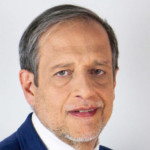
Dr Pablo Echarri (director of the Master of Orthodontics and Dentofacial Orthopedics programme at the Athenea Dental Institute) will talk about occlusion in the final and retention phases of Orthodontic treatment. Dr Echarri will focus the attention of the participants on the significant role of occlusion in achieving the three main therapeutic goals: AESTHETICS, FUNCTION AND STABILISATION of the masticatory organ.
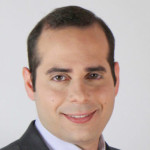
Dr Miguel Campoy will raise the subject of Occlusion in diagnostics and orthodontic therapy, speaking about a problem that affects some 15% of patients subject to orthodontic treatment. Dr. Campoy will demonstrate why it is so important to pay attention to the lack of harmonisation of the central relationship and habitual occlusion, and to take this into account in the diagnostic process.
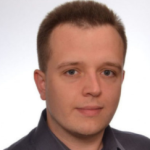
Dr Mieszko Więckiewicz will speak on occlusional controversies. He will discuss issues pertaining to the relationship between occlusion and the pathomechanism of temporomandibular disorders, and the role of the articulator and facial arch in the design of a correct occlusion.
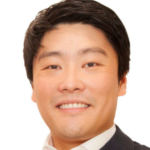
Dr. Young-Min Jo will deal with an important subject in the era of digitisation, when manufacturers are offering us better and more modern technologies. Dr Jo will speak about the latest and proven communication tools. He will present technologies and processes that not only improve treatment but also communication in orthodontic practice.
Agenda:
10.00 – 10.30 AM greeting the guests
10.30 AM – 12.00 PABLO ECHARRI, DDS
Occlusion in the final and retention phases of orthodontic treatment.
Occlusion became an important factor in three main therapeutic goals: aesthetics, function and stabilisation. The correct position of the elements of temporomandibular joints, and at the same time, the physiological operation of the masticatory muscles are important factors in the final phase of orthodontic treatment, including the retention phase.
12.00 – 12.15 PM break
12.15 – 01.45 PM – Yong-min Jo, DDS, MS, Ph.D.
Digital communication tools in orthodontic practice
Digital technologies and processes used in treatment and communication.
The digital revolution in dentistry has finally reached orthodontists. Digital processes such as intra-oral scanning and 3D printing are becoming more and more popular in orthodontic practices, enabling digital orthodontic data flow, which was still impossible just a few years ago. The work cycle can be divided into the following aspects: 3D digitisation, software processes, 3D printing and digitally planned clinical applications.
The lecture will explain each segment of the digital workflow, starting with the process of “digitising” with a thorough look at intra-oral scanning and model scanning. In addition, digital data processing and digital analysis and treatment planning will be discussed. 3D printing and new lab capabilities, as well as innovative clinical applications resulting from a fully digital workflow, such as Memotain, Nitinol CAD/CAM or Individua and CA Clear Aligners.
01.45 – 02.00 PM break
02.00 – 03.15 Dr hab. n. med. Mieszko Więckiewicz
Occlusional controversies
Correct occlusion remains in a dynamic relationship with the neuromuscular system of the masticatory apparatus and temporomandibular joints, which directly determines the maintenance of the physiological function of the stomatognathic system. Reconstructing correct occlusion brings each dentist a step closer to therapeutic success. Therefore, the objective of the lecture will be to discuss aspects related to the creation of perfect occlusion, aimed at ensuring the harmonious functioning of the dental arches and the musculoskeletal system. Issues pertaining to the relationship between occlusion and the pathomechanism of temporomandibular disorders, and the role of the articulator and facial arch in the design of correct occlusion will also be discussed. The topic of the complexities related to the involvement of the peripheral and central nervous system in the etiopathogenesis of occlusive-muscular-joint disorders will also be discussed.
15.15 – 15.30 PM break
15.30 – 17.00 MIGUEL ÁNGEL PÉREZ CAMPOY, DDS
Occlusion in orthodontic diagnosis and therapy
The subject of occlusion is highly significant at the initial stage of the therapeutic process in orthodontics. About 15% of patients treated orthodontically demonstrate lack of harmonisation of the central relationship and habitual occlusion, which forms a significant clinical issue to be considered in the diagnostic process. This phenomenon will be analysed in the sagittal, transverse and vertical planes, in relation to various malocclusion, including a description of its impact on correct diagnostics.
Clear aligner advanced course
Training programme:
1. How Clear Aligner works. CA Digital protocol update
2. The possibilities of the digital world. Gestaligner, CA Digital, indirect transfer, devices, retainers
3. Types of Clear Aligners
4. Clear Aligner: 3-3 aesthetics
- treatment connected with closing gaps,
- how to improve anchoring,
- congestion treatment: dilation and stripping,
- how to shorten the process,
- clinical activation of Clear Aligner,
- how to prepare rails,
- new tools: Vector screws and the stripping kit
5. The most important issues of Clear Aligner 5-5 and the professional 7-7
- treatment with dilatation
- treatment with distillation
- treatment with extraction
- treating class 2
6. Clear Aligner in mixed teeth
7. Combination of treatment with Clear Aligner and fixed braces
8. Forming a posterior occlusion before applying Clear Aligner to correct the anterior teeth
- treatment with Clear Aligner in one arch only
- treatment with the initial use of clear aligner, and ultimately with the use of a fixed device
- how, when?
9. Clear Aligner in the retention phase and re-treatment.
10. Preprotetic CA
11. Final conclusions
After the training you will:
- Know Clear Aligner’s rules of operation
- Gain basic knowledge about CA Digital, devices and retainers,
- Know the rules of treatment related to closing gaps
- Be able to apply the Clear Aligner technique in mixed dentition
- Be able to apply the Clear Aligner method to correct frontal teeth
- Know the rules of combined treatment
Clear aligner - initial training
Nowadays, more and more patients are looking for new, innovative methods of treatment that will secure their comfort, convenience and aesthetic appearance. That is why we wish to present you the Clear Aligner method for treating malocclusion.
We have created a special training program, which will enable you to start working with the Clear Aligner system after just one course. Of course, our cooperation will not terminate upon completion of this training, you will receive a guarantee of further help when planning Clear Aligner treatment, completely free of charge. We have a modern and certified lab working closely with Scheu Dental, thus you can count on our support and help in any situation. We encourage you to familiarise yourself with the detailed offer of the course.
Program:
- THERMOFORMING IN ORTHODONTICS
- PRESENTATION AND ADVANTAGES OF THE CLEAR ALIGNER AND CA DIGITAL SYSTEM
- FROM CONSULTATION TO TREATMENT
- DISCUSSION OF CASES
- STABILISATION OF TREATMENT EFFECTS – RETENTION
Advantages:
- Introduce an innovative treatment method to your practice
- The training will give you practical knowledge, you will be able to classify defects that can be successfully treated with the Clear Aligner method
- Thanks to the Clear Aligner method, you will be able to precisely plan your prosthetic and implant treatment
- The Clear Aligner method gives a lot of control over treatment, including the possibility to change the treatment plan at every stage
- After training, we provide assistance in planning treatment and orthodontic consultations by Dr. Ayham Mohsin
- We promote and recommend your practice on www.clearaligner.pl, where your practice will be included in the database of users of the Clear Aligner System
- We provide promotional materials for patients, and marketing materials for your website
Speaker:
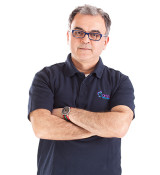
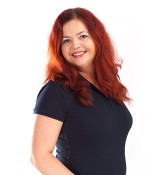
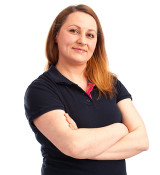
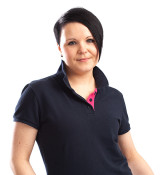
Master of Orthodontics and Maxillary Orthopaedics
The Master of Orthodontics and Maxillary Orthopaedics programme is a two-year programme addressed to dentists who want to improve their qualifications and introduce new methods of treatment in their practice. Thanks to the participation in the program, doctors gain PRACTICAL knowledge of the most modern treatment techniques and modern diagnostics, which will enable them to deal with various cases of malocclusion. The program is structured so that it can easily be accommodated with professional work.
Classes are held in English twice a month, they are two or three day sessions, and each day includes 10 hours of theoretical or practical classes. Participants meet in Rzeszów at the training hall or at the Ortodent Centre (www.ortodent.pl). Three trips to the Ladent Centre in Barcelona are also planned. The aim of the Programme is to train participants in the following areas:
- Diagnostics, including etiopathogenetic diagnostics, and planning treatment of various types of malocclusion.
- Performing orthodontic and orthopaedic procedures.
- Implementation of the orthodontic part of interdisciplinary treatment, participation in the work of the medical team.
- Organisation of orthodontic services and cooperation as part of a specialised service
Each course participant will, under the supervision of specialists, independently conduct comprehensive diagnostics and orthodontic treatment in about 10 patients. In the Master programme, lecturers put emphasis on theoretical knowledge, but practicing and gaining experience with patients is also important. There is also Campus Online, a unique library containing all information and materials prepared especially for participants, who will have unlimited access to it. Knowledge and practice is passed on in a manner accessible to everyone, and participants can contact lecturers both during the programme as well as after obtaining the Master title. Students of the Master program can count on special discounts for other training courses organised by the Athenea Dental Institute.
The annual Conference in Cracow, during the dental fair, also forms an important event. It is a time when, in addition to listening to interesting lectures, you can compare your experiences with other students, talk to lecturers or share your knowledge about the programme with other practitioners.
Throughout the Master Programme, there will be two exams held, checking your knowledge after each year, plus a defence of your thesis (master thesis) at the end of the programme. Positive evaluation of the thesis entitles the participant to receive the prestigious title of Master of Orthodontics and Maxillary Orthopedics, and in addition, the graduate will receive two diplomas, one issued by the Athenea Dental Institute, the second issued by the University of San Jorge in Zaragoza.
The programme has received very favourable opinions from the participants of the first, second and third editions.
A detailed plan of the program and a list of items can be found at: www.atheneainstitute.com/pl
In April 2019, we are starting recruitment for the 4th Polish edition of the Master Orthodontics and Maxillary Orthopedics programme. Classes will start in January 2020. A detailed schedule of classes will be available at the turn of July and August. We invite interested physicians to contact us.
Contact us in Poland:
Katarzyna Kurdziel
kasia@atheneainstitute.com
www.atheneainstitute.com
tel: 0048 666-091-708
Poland MEAW Course - Orthodontic Treatment based on Occlusal Plane Control
Poland MEAW Course
Orthodontic Treatment based on Occlusal Plane Control
Typodont course: Class II division 1, Non-extraction case
Person in charge:

dr Jeong-IL KIM
A unique Orthodontic Biomechanics Course in the EDGEWISE technique: Orthodontic treatment based on the control of the occlusal plane
Theory and practice on typodonts: EXTRACTIONLESS TREATMENT OF CLASS 2, SUBCLASS 1
Theoretical and practical training in the Edgewise system. If you ever wished to learn orthodontic biomechanics, this is the course for you!
The Multiloop Edgewise Archwire is a brilliant system of orthodontic treatment based on understanding the occlusion plane as the basic tool of orthodontic diagnosis, combining it with a passion for orthodontics.
Every orthodontist looking for challenges should sign up for this course. Mastering MEAW systems opens up the deepest realms of orthodontic biomechanics and significantly shortens patient treatment time. In addition, it will also allow you to understand the relationship between TMD and occlusion or malocclusion.
The number of places is limited (max. 25-person group)
Diagnosis of Functional Disorders of the Mesticatory Organ
Diagnosis of Functional Disorders of the Mesticatory Organ
The entire course will be devoted to the diagnosis of functional disorders of the masticatory organ and will be divided in two parts:
- theoretical part
- practical part
The aim of the course is to broaden knowledge of the diagnosis of temporomandibular joints, planning the treatment of orthognathic malocclusions through prosthetic reconstructions and orthodontic methods based on the concept of Prof. Sadao Sato.
The theoretical part will be devoted to the analysis and discussion of the treatment of patients with functional disorders of the masticatory system. Based on diagnostic research by Prof. Sadao Sato, and according to his concept, students will establish treatment plans for the discussed cases. The professor will discuss the condylographs; electronic examination of the functions of chewing, speech, swallowing, teeth clamping, grinding, protrusion and laterotrusion. We will discuss the following on the diagnostic level: etiology of malocclusion, functional examination of the patient, cephalometric analysis acc. to the concept of Prof. Sada Sato, diagnosis and treatment of bruxism, methods for determining the reference position and therapeutic position.
Diagnostic elements require the use of devices to examine the movements of the mandible, therefore, during the practical part, we will include exercises in using the Cadiax system – for use in everyday medical and dental practice, built on the basis of many years of medical experience of prof. Rudolf Slavicka, enabling us to record jaw movements and articulation parameters. It is a modern method of functional diagnostics and analysis, analysing the movements of the hinge axis and mandibular condyles, allowing us to individually program the articulator, record and verify the treatment process.
During the practical part, we will hold a demonstration of patient recording on the Cadiax face arch, individual joint axis, and a full examination and diagnosis process. The last day of training will be devoted to interpretation of the results from the previous day.
Orthognathic Orthodontics – Malocclusion Concept and Treatment Approach
„Orthognathic Orthodontics – Malocclusion Concept and Treatment Approach”
prof. Sadao Sato
prof. Sadao Sato - lecturer at the famous Viennese school of PROF.SLAVIČKA VieSID, inventor of Bruxchecker
- an outstanding specialist in the field of orthodontics, using the multi-loop MEAW method
- Lecturer and academic teacher
- Author of numerous articles and books on orthodontics
- Author of the concept of orthodontic treatment based on the treatment of occlusion problems in connection with the treatment of TMJ dysfunction – PROFESOR SADAO SATO
Prof. Sada Sato runs a two-day theoretical course on his brilliant concept of treatment of malocclusion based on the solution of the occlusion problem in connection with the treatment of TMJ dysfunction, which in many cases allows us to avoid orthognathic surgery.
Seminar Contens :
- General Statement on Malocclusion-Understanding of Malocclusion
- Class III and Open Bite Malocclusion-Its Etiologies and Treatment
- Mandibular Position as a most important subject in occlusion dentistry, RP- TRP Concept
- Class II and TMD-What is the TMD and benefit of orthodontic approach to TMD

